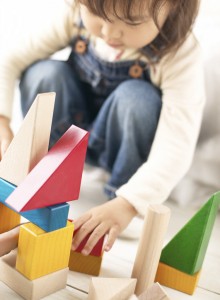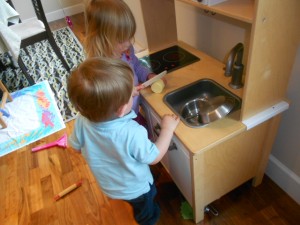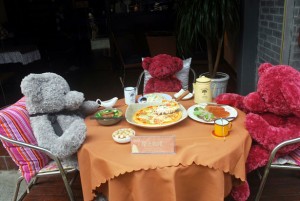Every profession or trade has tools. For kids, those are crayons, paint, glue, scissors, etc. Kids need to play with school tools before kindergarten. Play is the work of the child.
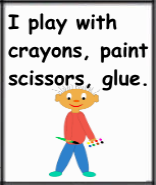
This earlier post has a description of some tools and how to use them:
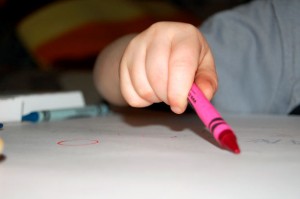 Once you have crayon-proofed, perhaps that should be kid and accident-proofed an area, let your child enjoy coloring with crayons, markers, and chalk. Big crayons are easier to hold than little ones.
Once you have crayon-proofed, perhaps that should be kid and accident-proofed an area, let your child enjoy coloring with crayons, markers, and chalk. Big crayons are easier to hold than little ones.
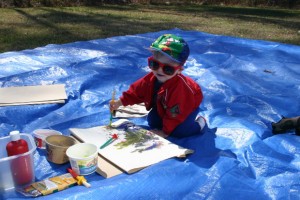 Brushes and paints are also fun as are color dabbers and even q-tips. Food coloring diluted with water is another way to apply color to paper. Speaking of paper, old wrapping paper is blank on one side and even cereal or pizza boxes are good and sturdy for coloring or gluing.
Brushes and paints are also fun as are color dabbers and even q-tips. Food coloring diluted with water is another way to apply color to paper. Speaking of paper, old wrapping paper is blank on one side and even cereal or pizza boxes are good and sturdy for coloring or gluing.
Glue comes white, clear, colored, premixed with sparkles, and even glow-in-the-dark, everything it seems but easy-close. Glue sticks and liquid glue both seem to have challenges with lids. With kids, sometimes the challenge is not to have more glue on them than the project, but kids enjoy activities with glue.
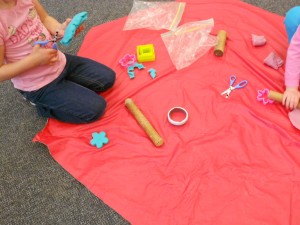 Scissors are tricky to figure out. Did you know play dough is super easy to cut? For hands and brains that are learning to coordinate, play-dough is exceptional. Plus it can be put back together and used over and over. Not just cutting, but rolling, smoothing, patting, poking, and smooshing give small muscles lots of exercise.
Scissors are tricky to figure out. Did you know play dough is super easy to cut? For hands and brains that are learning to coordinate, play-dough is exceptional. Plus it can be put back together and used over and over. Not just cutting, but rolling, smoothing, patting, poking, and smooshing give small muscles lots of exercise.
These are only a few items for play with school tools. Kids won’t play with them in the same ways. Some kids may not be interested in playing with them much at all. This sort of play uses small muscles in the fingers, hands, and wrists. Large muscle activities like running, climbing, chasing, jumping, and swinging, have more appeal. Who wants to sit still when bodies want to move?
For kids who have higher mobility needs than others, we can adapt the tools. Fill a bucket with water and give kids a big wall paintbrush. Painting the fence with water is fun even if there’s nothing to see when the water dries. Check if any stores have wonderful refrigerator-size boxes. These are fun to color outside and inside. Kids can ‘write’ in the sandbox with cars and trucks.
As kids play with the tools of their work, they are developing and strengthening fine motor coordination. They are also practicing thinking skills, such as problem-solving, making choices, and following instructions. Often, there’s an element of imagination. When they show us what they have done and talk about it, they get to use language in specific ways. Feeling a sense of pride and accomplishment isn’t always easy for kids. Tools are useful for creating.
Sometimes, as parents and caregivers, we forget the value of toys and tools for play and learning. What are some other great tools or ways to play with school tools you can suggest?
There are more items on the Before I Go to Kindergarten infographic. Check posts both before and after too for more ideas.

